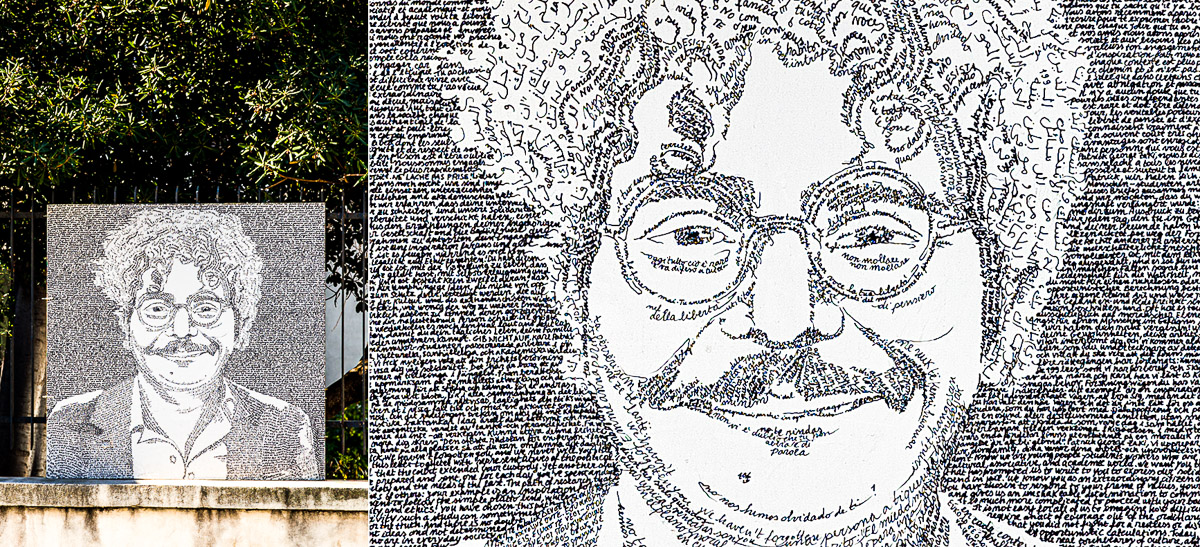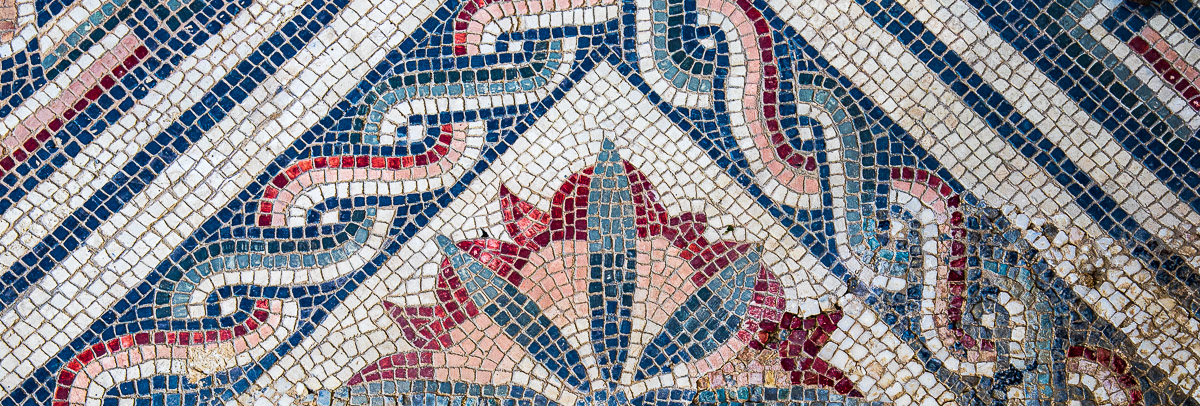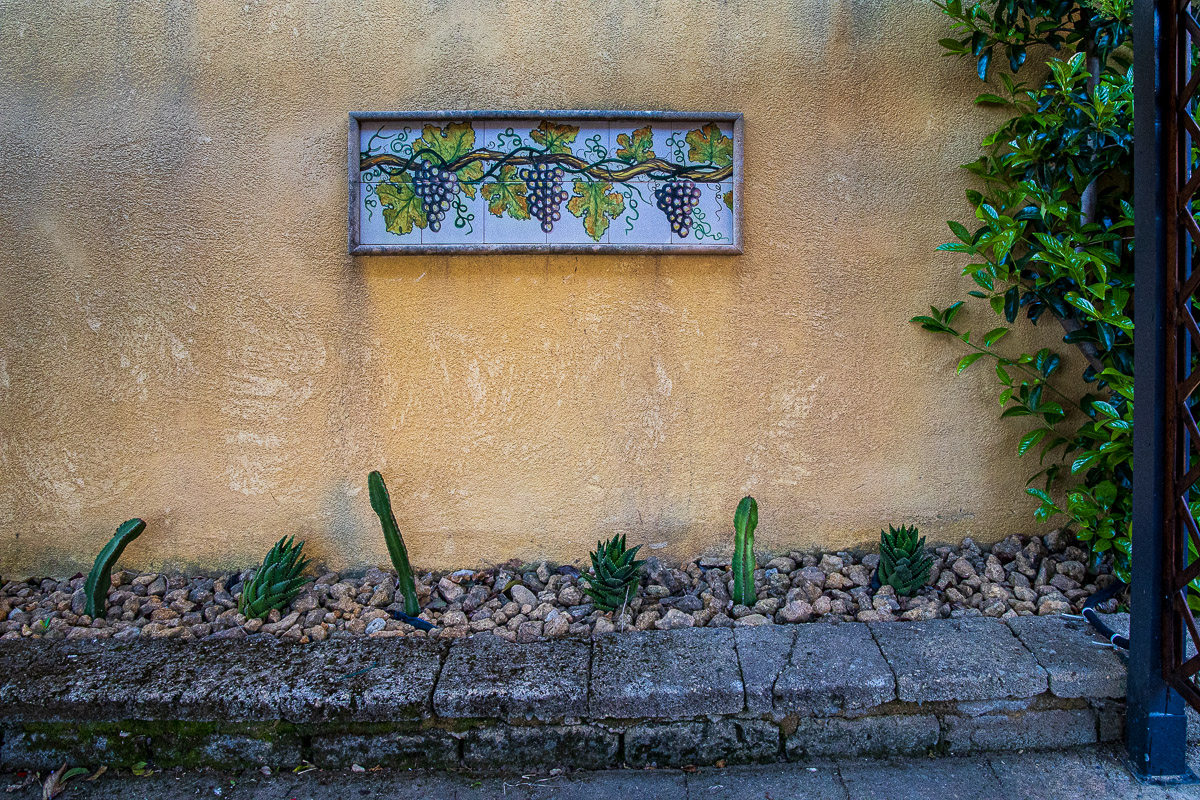We packed our bags. It was time to move on from Siracusa. On our way to the bus we passed a portrait on a fence near the hotel. I had not seen this style of portrait before. The entire image was created using handwritten text. On closer examination I could see that the text was in more than one language. From an internet search later that day, I found that this is the work of Francesca Grosso, a multi-talented artist, musician and teacher. She created this “portrait of words” style known as an Artistic-Social Calligram. Hopefully you can get a sense of the style in the enlarged frame below. I found it fascinating, but since I had to keep up with the group heading to the bus, my examination was limited.

As we left Siracusa, Mt. Etna was clearly visible down the highway. Then, much to my surprise, we passed an Ikea. Although I could imagine Sicilians sitting at home happily assembling their new Swedish furniture, I couldn’t imagine them going to Ikea for meatballs! We eventually exited the freeway and started to head into a more rural part of Sicily. For quite a while Mt. Etna continued to loom in the distance over orchards, fields, and old houses. It really dominated the landscape. Finally, however, the landscape got hillier and the distant mountain disappeared behind the nearby hills.
Mouse over the small photos in galleries to see captions.
Click on any one to enlarge, then use arrows to scroll through the rest of the images.
After stopping for lunch we drove to the Villa Romana del Casale, which is considered one of the finest examples of ancient Roman villas. This UNESCO World Heritage site dates from the 4th century and contains about 37,000 square feet of well–preserved mosaics. According to UNESCO, the villa “is one of the most luxurious of its kind” and contains “the finest mosaics in situ anywhere in the Roman world.” A factor that contributed to the preservation of the villa was a landslide that buried this area in the 12th century. Some excavation began in 1929 but the mosaics were not discovered until work ramped up in the 1950s. It took about sixty years to complete that work. Recent restoration has covered the complex with a wooden roof and an elevated walkway for visitors to view the tiled floors. Therefore, many of my pictures were taken while looking down from the walkway. Considering that you always have to look down to see the floor, that wasn’t much of a problem.
Passing through the entrance and atrium, we arrived at the baths. The Romans really loved their baths and the ingenuity of their 4th century construction was quite interesting. Access to three “furnaces” was located just outside the baths. The floors of the baths inside were built on foundations of small tile pillars, which created large spaces underneath. The fires were stoked continuously making the air in these spaces extremely hot, heating the floors above that contained the water. The first two photos in the second row above show the furnaces and the tile pillars supporting the floor. The closeup image below from The Vestibule of the Baths shows that although there is damage to the floors, much of the tile is still colorful and in good condition after 1600 years.

Next to the baths we viewed the Palestra. Exercise was a part of the bathing routine so the Palestra was the home gym. The design of the mosaic floor looked like a chariot race around an oval track. Maybe this inspired them to exercise more vigorously. Roman villas are designed with the rooms built around a large courtyard, called the Peristyle. There was a fountain in the middle but it wasn’t running and I’m not sure if it ever runs. The Peristyle was surrounded by columns and a walkway. Some of the columns are still intact, others are reconstructed. The walkway mosaic displays a long series of exotic animal heads. Continuing along the courtyard we viewed The Atrium of the Fishing Cupids, which was designed as a small pool and fountain in a semi-circular room, and The Room of the Small Hunt, which may have been used as a dining room.
I’m getting a little bored saying here’s this room used for this and here’s that room used for that, so I’ll finish the tour with one last set from the Villa but say little about them. I have to mention the first picture because, although it’s named Girls in Sports Competition, it’s usually referred to as The Bikini Girls. I doubt that’s the name given in the 4th century, but, who knows? I don’t know the names of some of the rooms pictured below, but you don’t really have to know what they’re named in order to enjoy them. They just demonstrate the incredible variety of mosaics at this archeological site.
After a very interesting tour of Villa Romana del Casale, we climbed back into our bus and continued down the road. We still had a long drive to reach our next overnight stop, the Colleverde Park Hotel in Agrigento. There we enjoyed a good meal, a walk in the hotel garden, and a relaxing evening under a not-quite-full moon.

<— In and Around Ortigia (Sicily Part 7) :: (Sicily Part 9) Temples and more Temples —>